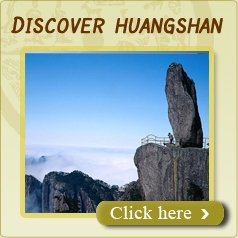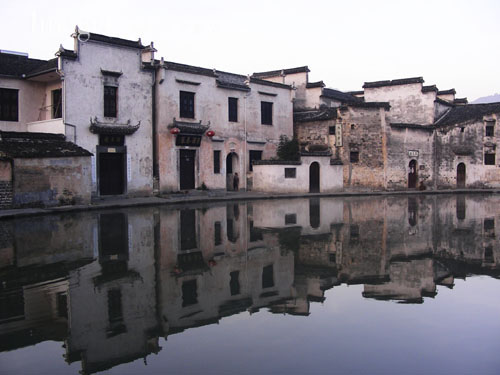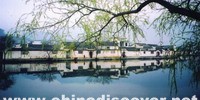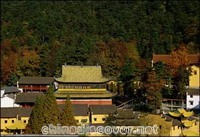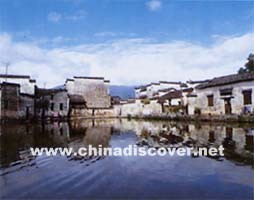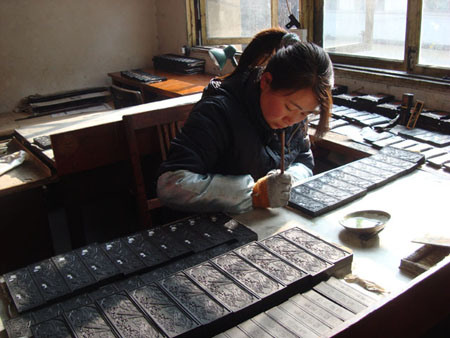Mount Huangshan
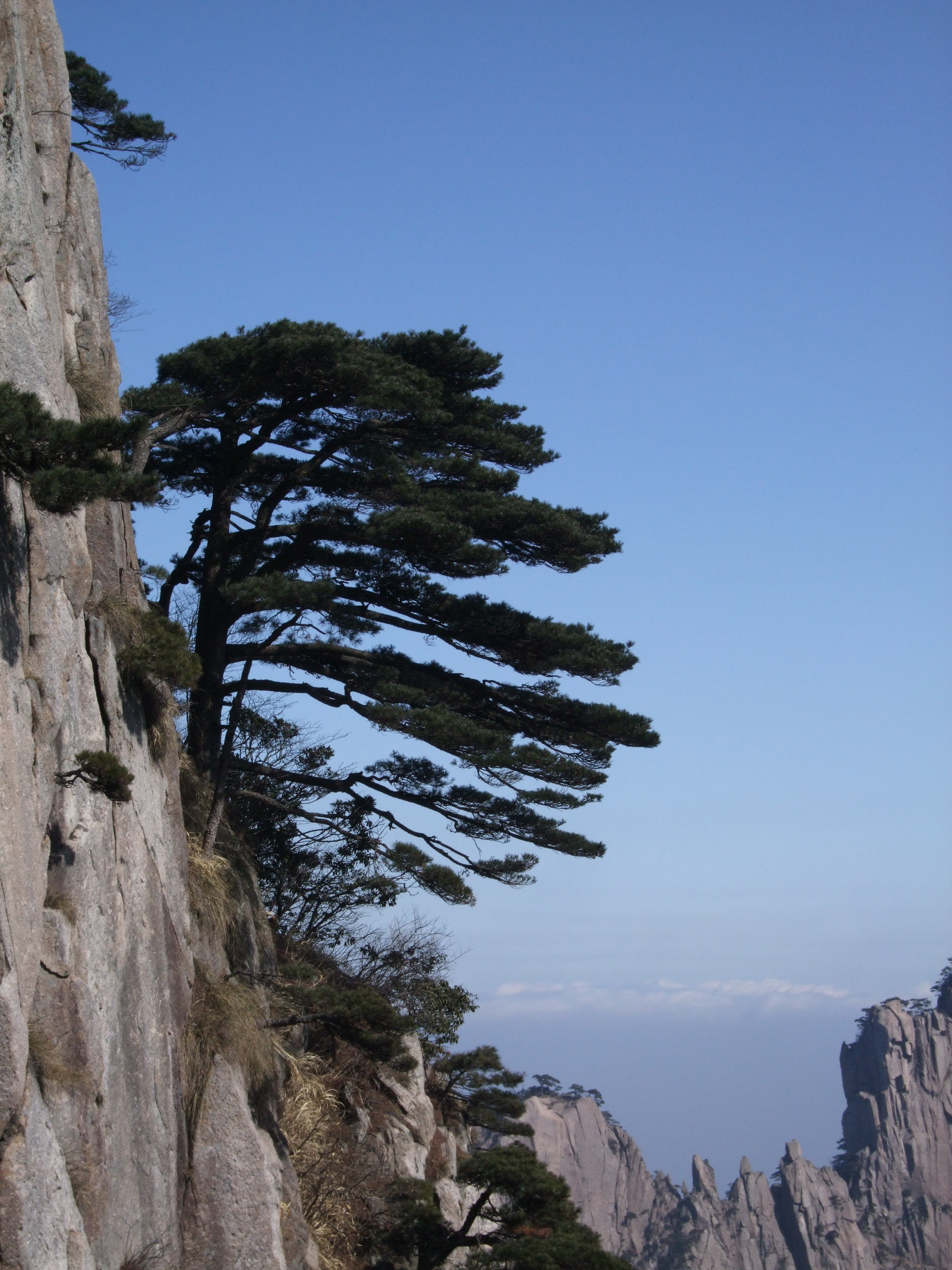
“After a trip to Huangshan, China's Five Sacred mountains pale in comparison …” so goes the old Chinese saying. Hundreds, thousands and hundreds of thousands of people have journeyed to Huangshan every year for centuries to see for themselves if the Yellow Mountain is, as rhapsodized by ancient poets, indeed the most beautiful in China.
Yellow Mountain, also known as Mount Huangshan, is located in the southern part of Anhui Province. It is undoubtedly China is most celebrated mountain for all its grandeur and beauty. In 1990 Yellow Mountain was declared a World Natural and Cultural Heritage by UNESCO Heritage Committee.
In the Qin Dynasty (221 – 206 BC) Huangshan was collectively known as Yishan – Black Mountans – because of its dark peaks. It was in June of the year 747 that Tang Dynasty (618-907) Emperor Xuan Zong, a follower of Taoism, commanded that its name be changed to Huangshan. His decree was based on Taoist writings on Huang Di -- the Yellow Emperor and ancestor to the Chinese nation -- and how he created his elixir of immortality on Huangshan. As set out in this Taoist volume, after working on a secret elixir for 480 years Huang Di took seven pills, achieved immortality and flew to Heaven.
So what is it about Huangshan that makes people come again and again? Because, perhaps, the best features of China's other famous mountains are here. Huangshan's peaks are as lofty as Taishan's and as steep as Huashan's. They are shrouded in a sea of clouds like Hengshan, have waterfalls as majestic as those on Lushan, Emei mountain's tranquil coolness and the picturesque rock formations of the Yandang Mountains. Aside from all these similarities, Huangshan has its own grotesquely shaped pines, imposing cliffs, and hot springs.
Within an area of 154 square kilometers, the mountain offers a crowd of peaks. 72 of them have names indicating the shapes they resemble. Lotus, Brightness Apex and Celestial Capital are the three major ones, all rising above 1,800 meters. The mountains are a body of granite, often with vertical joints. When it is cloudy the pinnacles loom in mists as if they were illusionary. When the sun shines, they unfold in all their majesty and splendor.
From ancient times Mt. Huang has been frequented by tourists seeking their mystery and admiring their scenery. They come to the conclusion that the fantastic pines, the grotesque rocks, the sea of clouds and the hot springs are the four major attractions of the Yellow Mountains. As a matter of fact there are marvels almost everywhere, especially in scenic areas such as Wenquan (Hot Spring), Yupinglou (Jade Screen Tower), Xihai (West Sea), Beihai (North Sea), Yungusi (Cloud Valley Temple) and Songgu'an (Pine Valley Nunnery).
Because of its peculiar terrain, the Yellow Mountain's climate is marked by a vertical change, and the vertical distribution of vegetation is also distinctive: plants on the summit, on the middle levels and at the foot belong to the frigid, temperate and subtropical zones respectively. There are more than 1500 species of plants, of which trees comprise one third. So the Yellow Mountain occupy an important place in China's botanical research. Here you will find century-old pines, firs, ginkgoes, Chinese torreyas, Chinese sweet gums, nanmus, camphor woods and the precious Magua trees, remnants of the glacial era.
The Yellow Mountains abound in flowering plants; many of them are rare ones, such as Goddess Flower, the Yellow Mountains Azalea as well as camellia, plum, lily, crape myrtle, orchid, Spring Heralding Flower and so on. It has a rich store of medicinal herbs; more than 300 kinds are found here; the notable ones being glossy ganoderma ginseng, Chinese gold thread rhizome and Chinese cinnamon. Maofeng tea of the Yellow Mountains is well known at home and abroad.
Though looking fresh and young, Yellow Mountains have a long history to which ancient books, poems and paintings as well as carved inscriptions all bear witness. Poetic phrases in handsome calligraphy can be found in many spots on the mountain. They have become part of the fascinating scene themselves.
Tourists should not miss a visit to North Sea, (Beihai), West Sea (Xihai), Celestial Capital (Tiandu) Peak, Jade Screen (Yuping) Tower, and Cloud Valley (Yungu) Temple, which are among the prettiest sights on Mount Huangshan. Cool (Qingliang) Terrace is the best place for watching the sunrise and the clouds.
Huangshan's charm has drawn many distinguished travelers, including poets, writers, and painters of various dynasties, and tourists continue to flock to this legendary mountain all the year round.
Huangshan's deep green pine trees that have adapted to local conditions are one of the biggest local wonders. Growing from crannies in stones, many have existed for hundreds of years, and are regarded as symbols of stability and longevity. Most of Huangshan's pines are more than 100 years old and 10 truly symbolize longevity, having stood for an incredible 1,000 years. The weird shapes into which these famous trees have grown are intimated by their names “Pine Greeting a Guest”, “Pine Parting with Friends” and “Lovers.” There is also a pine called “Unity,” named for its 56 branches that match exactly the number of China's ethnic minorities.
The few hotels on Huangshan seem expensive, taking into account the standard of service, but their stiff levies are attributable to the additional cost of transporting commodities up the mountain. Porters carry them in big wicker baskets suspended from yokes and take linens for laundering on their descent. This back breaking but necessary work adds a hefty percentage to hotel tariffs.
Huangshan is a popular spot for honeymooning newly-weds, and also has special significance for couples in general. This is evident in the hundreds of padlocks that can be seen hanging in the most remote spots. It is popularly believed that lovers or married couples can secure their union by hanging a padlock from some point on a mountain summit and throwing the key down to the valley below. If a couple decides to part they can do so only after coming back to Huangshan, searching the relevant valley for the key to their padlock and unlocking it.
